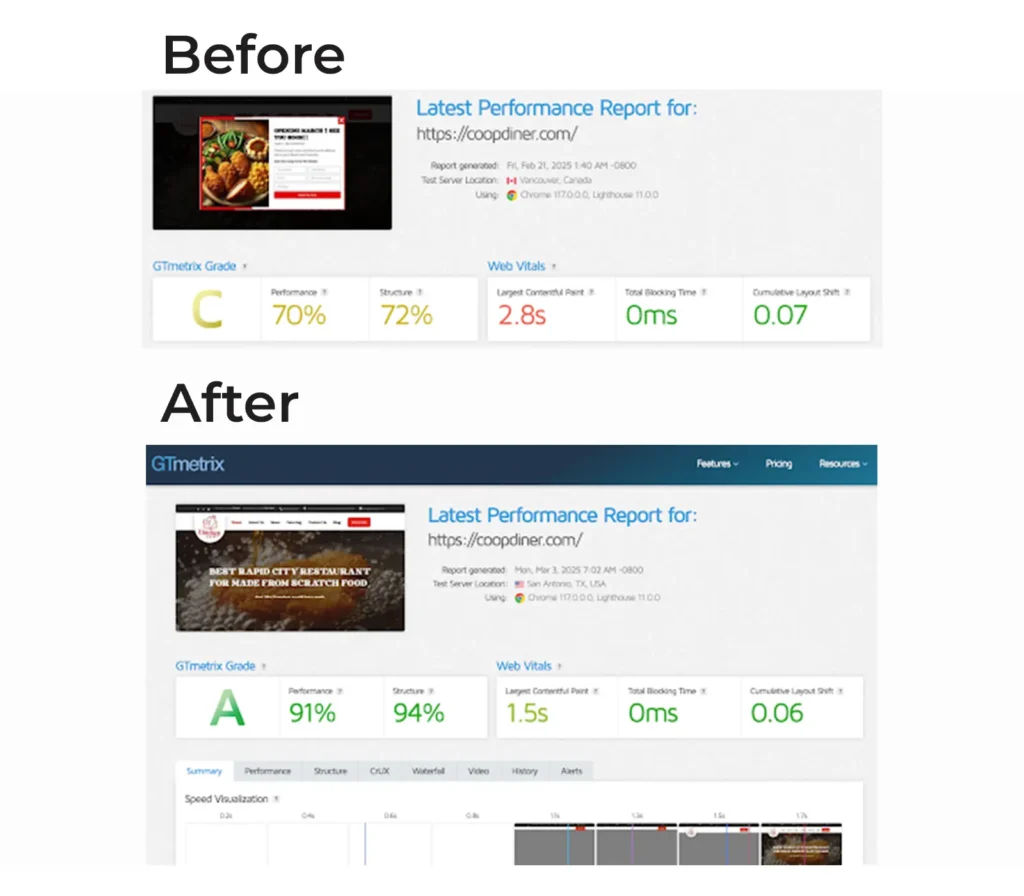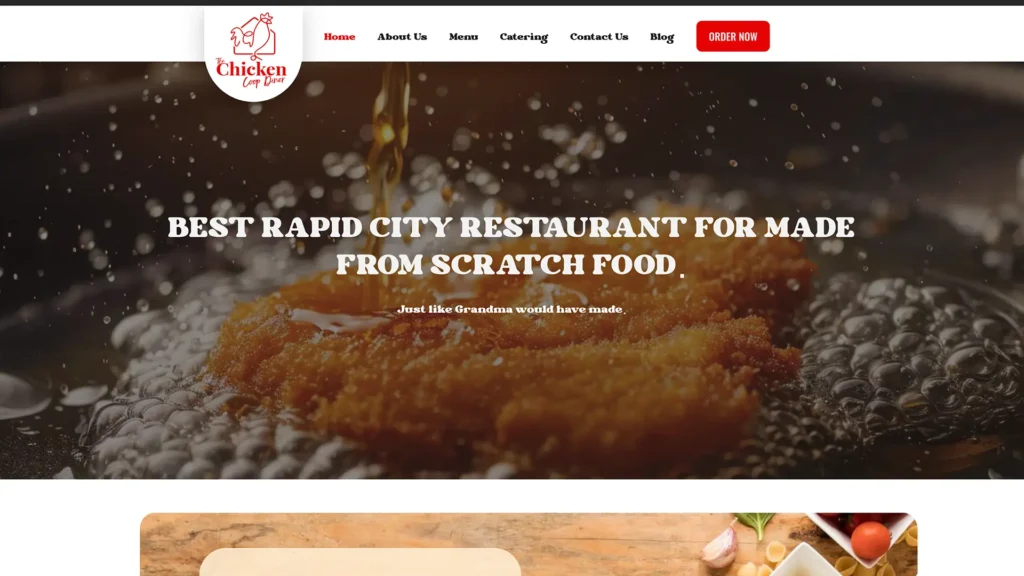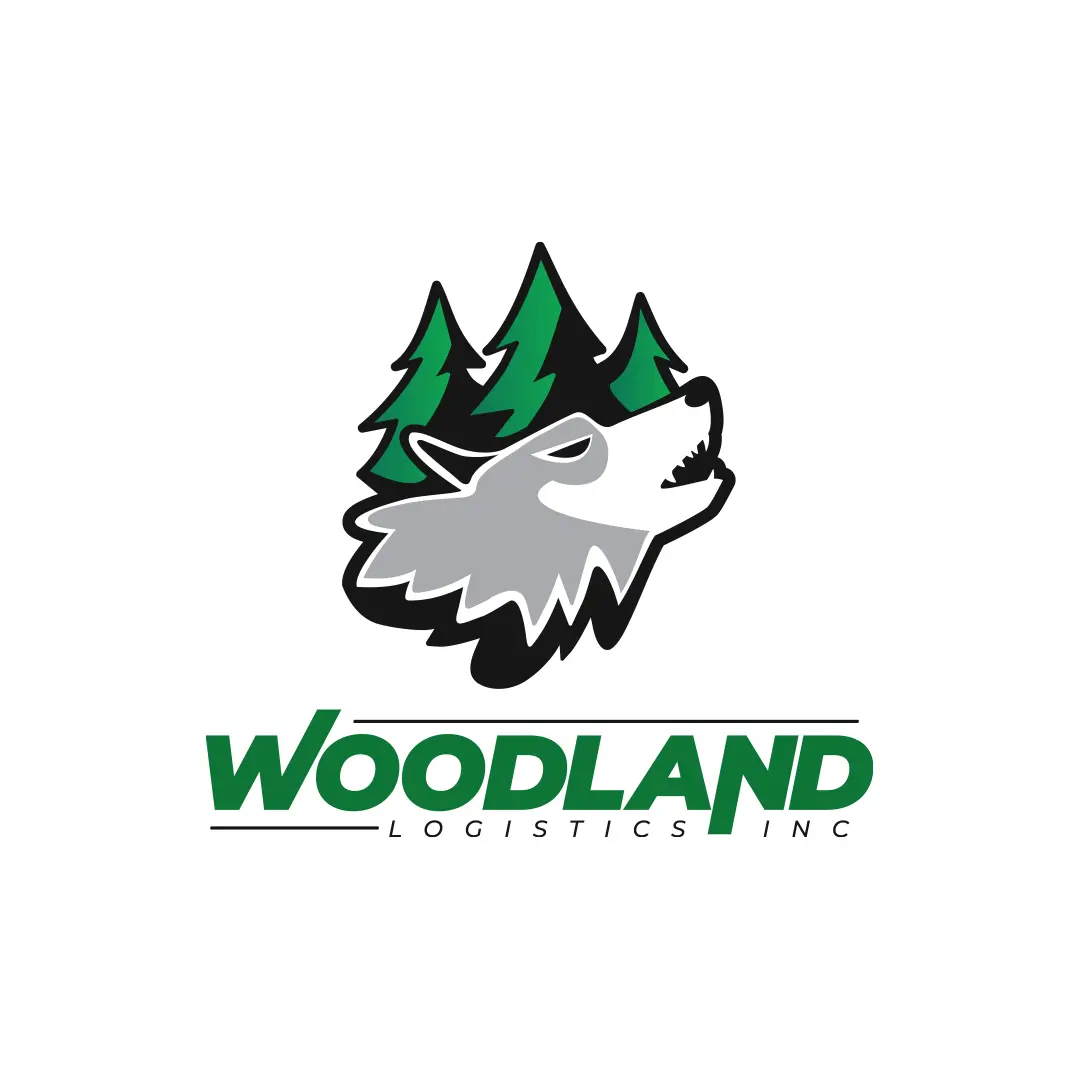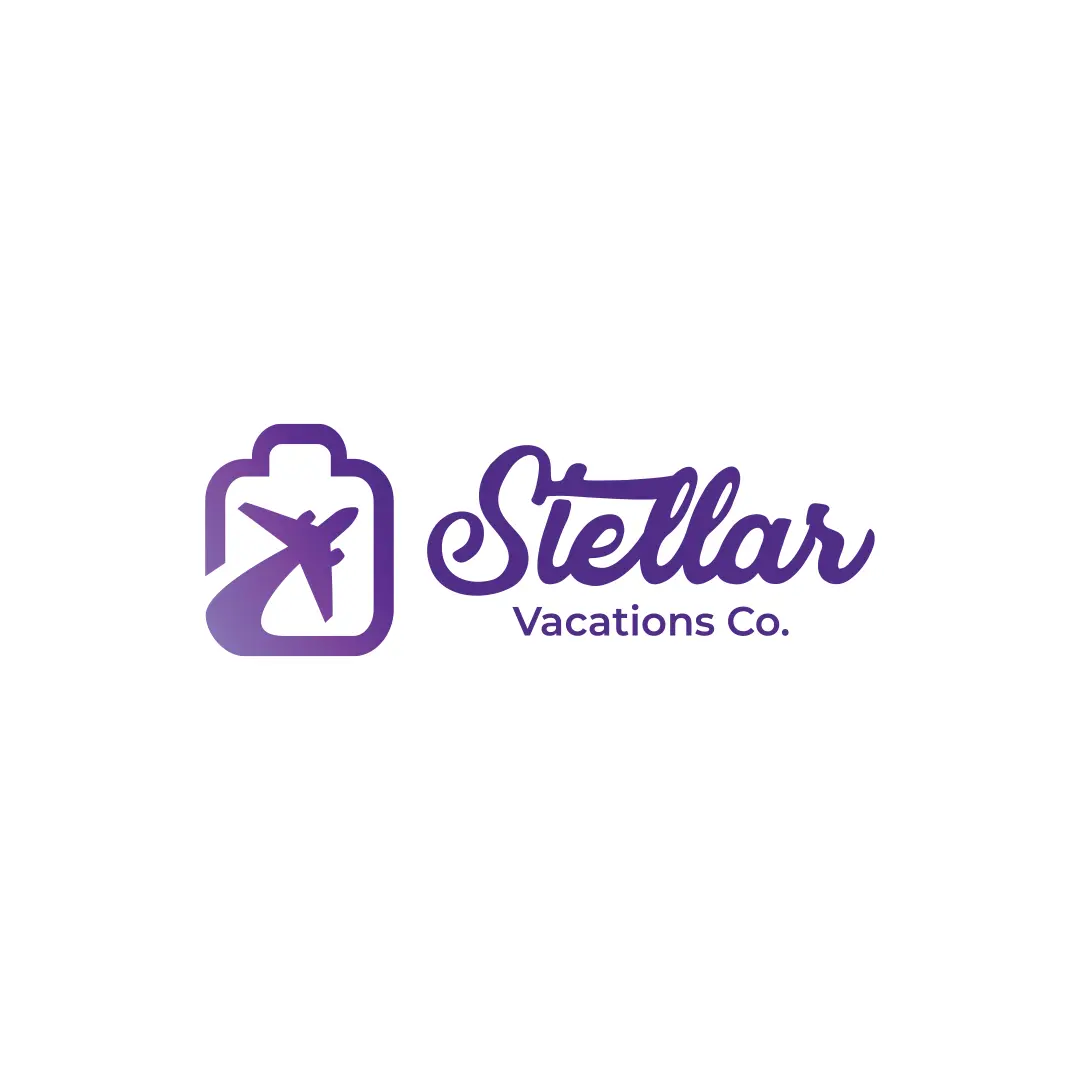Improving Local SEO for a Rapid City Restaurant
March 22, 2025

When Coop Diner, a locally owned restaurant in Rapid City, South Dakota, reached out to us, their website had the basics in place—but lacked the structure and optimization needed for strong local visibility.
Through a combination of on-page SEO improvements and technical performance enhancements, we helped position their website for long-term success in search rankings.
One of the most impactful results was the dramatic increase in site speed. Using tools like GTmetrix, we improved their performance score from a C to an A, significantly enhancing both user experience and SEO potential.
In this case study, we’ll walk you through the key steps we took to optimize Coop Diner’s site and how small changes made a big difference.
How it started
Improving performance and site structure with Elementor
When we logged into the WordPress dashboard, we noticed that Elementor Pro wasn’t activated. We added our agency license, updated all plugins, removed the unnecessary ones, and replaced a few with better alternatives. For example, we switched from Yoast to RankMath. Then we opened the site in Elementor and saw that the old column layout was still being used. Section by section, we rebuilt the entire site using the new container system. While doing that, we saw that the tablet view wasn’t optimized at all—so we fixed that too. We double-checked every pixel. Some things we changed, some we removed, and some we improved. We installed a caching plugin, re-exported every image in proper web resolution, renamed them based on our keyword strategy, and added alt tags and descriptions. We also did a few of our “magic touches,” and the results came quickly. The site speed jumped from a C to a high A on GTmetrix (see screenshot).

On-Page SEO optimization: structure, content, and indexing
After improving the site’s performance, we moved on to fixing the heading structure. The original headings were not organized properly, and most were not optimized for SEO. We added a clear hierarchy—just one H1 per page as the main title, followed by H2 and H3 elements where needed.
As mentioned earlier, when we optimized the images for faster loading, we also renamed each file and added alt text and descriptions based on our keyword strategy.
The website copy was also improved. We added relevant keywords, extended some paragraphs, and made sure the content was aligned with SEO goals.
Next, we wrote and added meta titles and meta descriptions for each page. Then, we created an XML sitemap, connected the website to Google Search Console, and manually indexed all pages.
On the contact page, we added a Google Map embed to improve user experience and local SEO relevance.
In the end, the entire on-page optimization was completed according to fundamental SEO principles.
Content strategy, local keywords, and review boost
As part of our SEO strategy, we researched what people actually search for when looking for restaurants in Rapid City. Phrases like “new restaurant in Rapid City”, “catering Rapid City”, and “family friendly restaurant” stood out as both relevant and promising for search visibility. While some of these keywords are competitive, we identified clear opportunities to rank with quality content.
We wrote and published four carefully crafted blog posts, exactly as planned for this phase of SEO. Each one was focused on a specific keyword and written in a creative, user-friendly style that matched the brand’s voice.
It’s important to mention that SEO is not a one-time job. To maintain and improve rankings, regular content updates and monitoring are essential.
One key factor in local SEO is Google reviews. As an added value to our service, we created a custom page titled “Leave Us a Review”. This page makes it easier to ask guests for feedback. It includes a friendly message (“We’d Love to Hear From You!”) and a direct CTA button that leads to the Google Business review form. You can see how this strategy works in more detail here:
👉 Effective Strategies for Requesting Google Reviews
We are currently tracking the website’s SEO performance using tools like Semrush, and in some cases we also recommend and use Ahrefs depending on client preferences. Naturally, we’re also monitoring search performance in Google Search Console.
In addition, we installed a lightweight analytics plugin on the site that helps us follow visitor behavior, pageviews, and performance in real-time.
Smart backlink strategy for long-term SEO growth
We created a tailored plan for building high-quality backlinks. At Strumark, we strongly believe in organic backlinking.
What does that mean?
We’re not fans of buying backlinks. Instead, we recommend guest posting on trusted local websites—especially those with strong domain authority and a relevant audience. Well-written articles that provide real value to readers are one of the most effective ways to earn quality backlinks.
For Coop Diner, we suggested three highly relevant local platforms focused on tourism and community news in Rapid City and the Black Hills. These portals attract both locals and visitors, which makes them ideal for placing thoughtful, engaging articles that include a link back to the restaurant’s site.
A smart backlinking strategy is crucial.
In some cases, it’s better to invest your marketing budget into a strong local media placement than into Facebook ads. Of course, we support all forms of marketing—but when it comes to long-term SEO, guest posts on trusted, relevant websites are hard to beat.
Get a free keyword analysis for your business

I’m excited to help you uncover the right keywords for your business. Sign up for your free keyword analysis today.
Ljubo Struharik, Founder & CEO of Strumark



